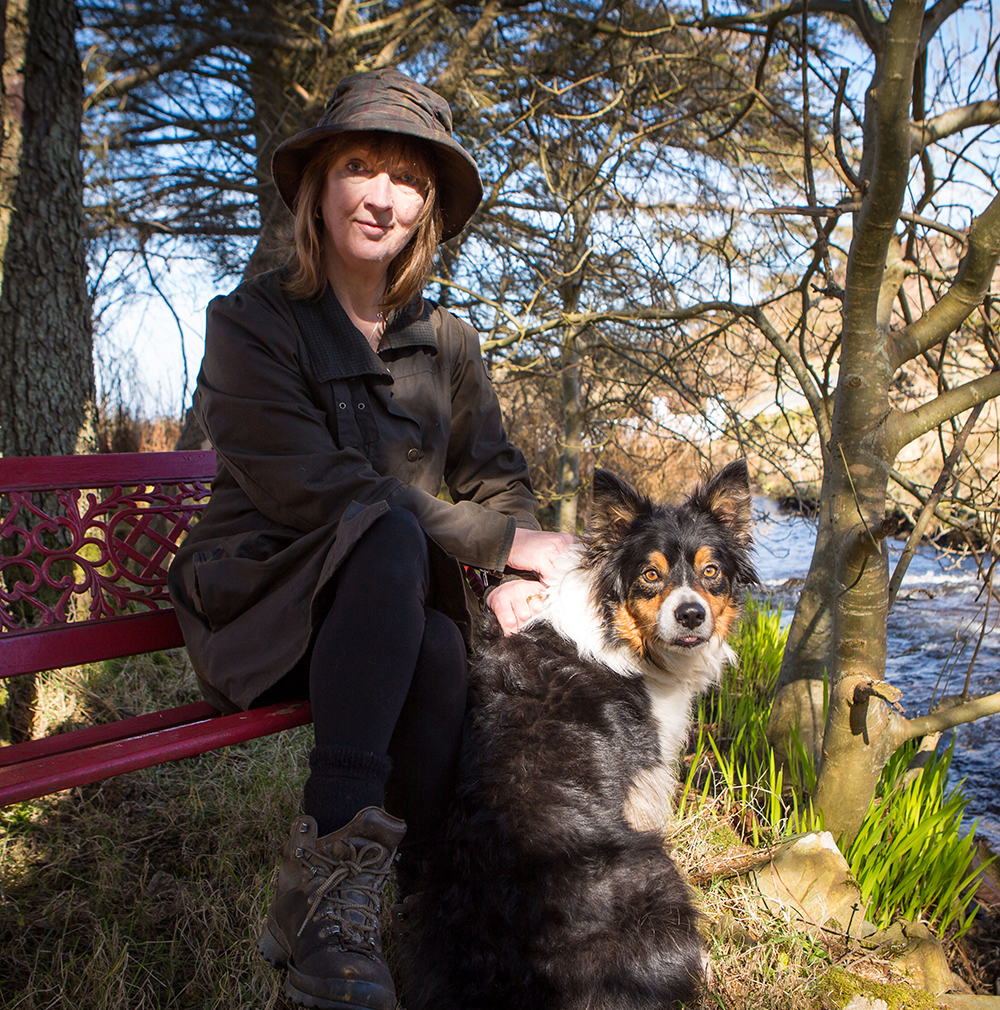
Sharon Blackie, our Author in the Picture for June, is much-loved in the LoveReading team. The Enchanted Life, published in paperback at the beginning of June is a practical, thoughtful, and wise book that helps us reclaim the enchantment within ourselves and the natural world around us. Another favourite is Foxfire, Wolfskin and Other Stories of Shapeshifting Women where 13 short stories take hold, bite, and leave their mark. Then of course there is If Women Rose Rooted, editorial expert Joanne said: "Founded on fables, feminism and reconnecting with the land, this is a strident call for women to re-root themselves in nature in order to take flight in themselves”. So of course, we were delighted to hear that we would be taking a look into her writing world. Doesn’t her writing spot look delicious cosy? There are number of items on the shelves that look particularly magical. And, I have to confess to loving Sharon even more now that I've seen her favourite book, I completely and whole-heartedly agree with her!
Dr. Sharon Blackie is an award-winning writer, psychologist and mythologist. Her highly acclaimed books, courses, lectures and workshops are focused on the development of the mythic imagination, and on the relevance of our native myths, fairy tales and folk traditions to the personal, social and environmental problems we face today. Sharon has written four books of fiction and nonfiction, including the bestselling If Women Rose Rooted. Her writing has appeared in the Guardian, the Irish Times, the Scotsman and several magazines and journals, and she has been interviewed by the BBC and other major broadcasters on her areas of expertise.
Website http://sharonblackie.net
Twitter @SharonBlackie
Instagram @sharonblackiemythmakings
Facebook @sharonblackiemythmakings
***
The book that made you first want to become an author
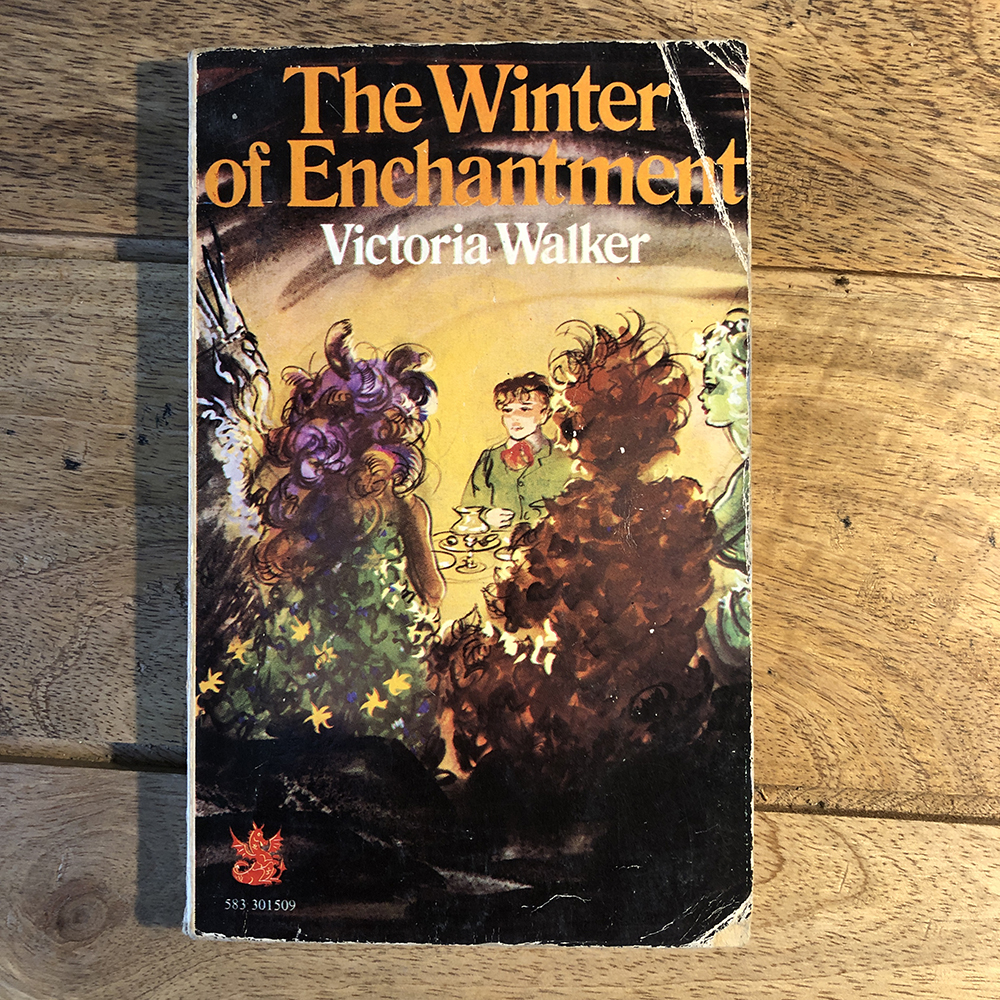
I was a voracious reader as a small child, and a great lover of myths and fairy tales. But there was something about Victoria Walker’s The Winter of Enchantment (which, according to my scribbles on the inside cover, I read when I was 10) that really captured my imagination. I read it again and again. Somehow, this other world that she invented was infinitely more real and desirable to me than those in the Enid Blyton books, with their rather more ‘twee’ fairylands, that I’d been given when I was younger. I went on from there very rapidly to discover Ursula Le Guin’s Earthsea trilogy, Tolkien, and similar creators of other worlds, but it was Walker’s book that first introduced me to fantasy and mythic fiction. It helped me understand how it was possible to translate a love of myth and folklore into a new work of fiction that could captivate, and it made me want to create my own worlds in which I could help readers not only find pleasure, but depth – and ultimately, ways of reimagining themselves.
Favourite book cover to date
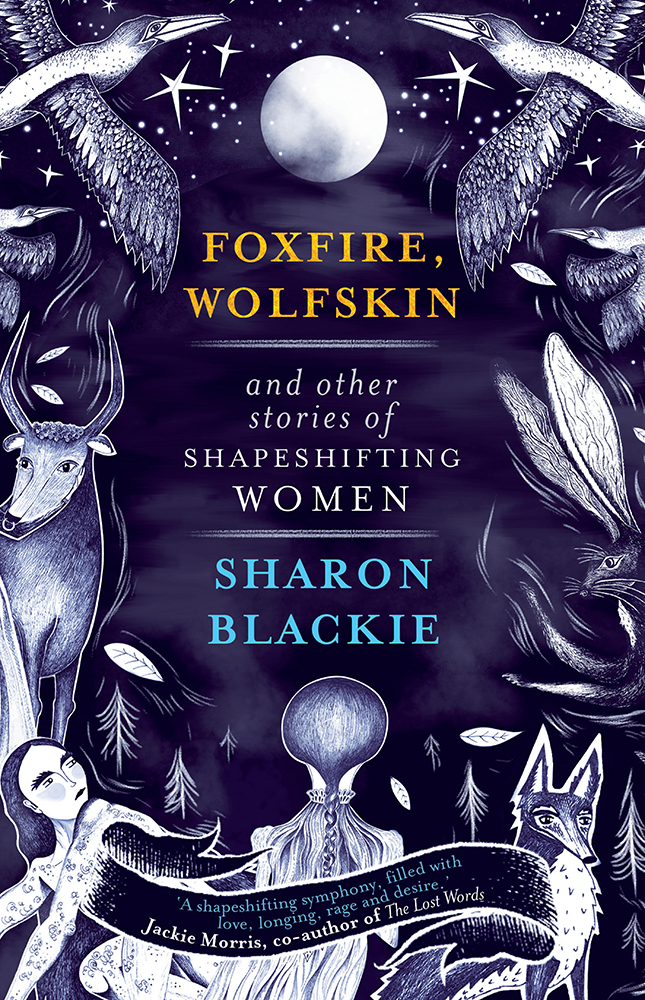
I’ve loved all of Leo Nickolls’ brilliant covers for my books with September Publishing, especially the original, fiery hardback cover of Foxfire, Wolfskin and Other Stories of Shapeshifting Women. But there’s something particularly magical about his design for the paperback version, into which he incorporated fragments of Helen Nicholson’s beautiful interior illustrations. It really captures the feelings of enchantment and possibility that I wanted to convey with these fairy-tale reimaginings, and the remarkable ability of women to transform themselves in the face of seemingly impossible circumstances.
Favourite reading or writing spot
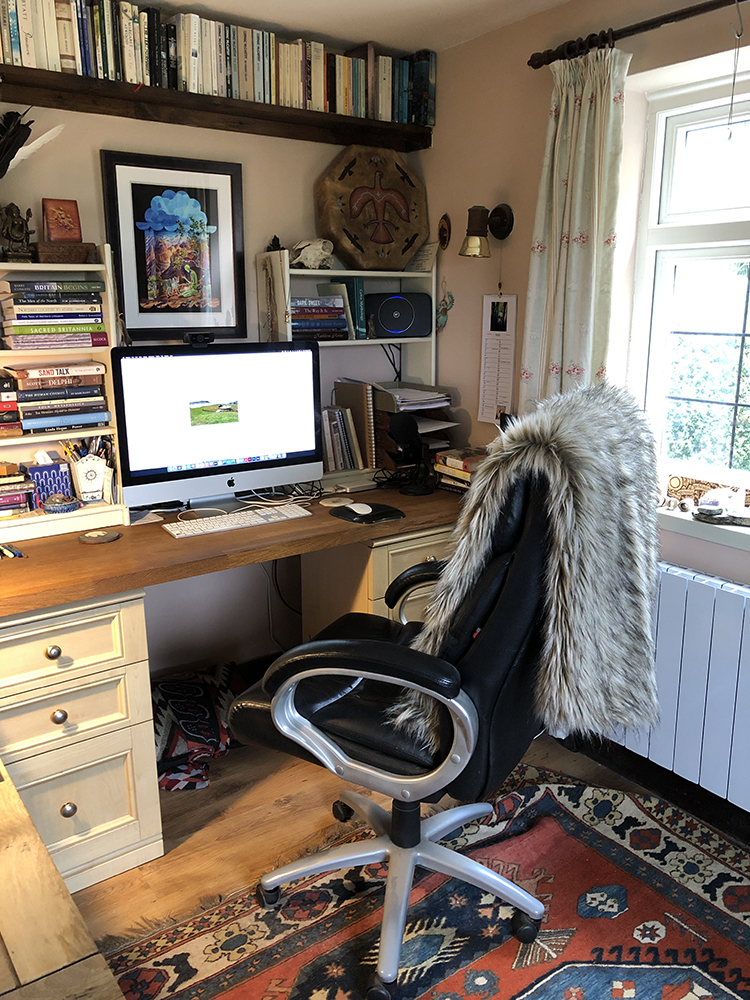
This is my desk – where all the hard work happens (as opposed to the reading and dreaming, which takes place in a favourite armchair by the woodburner). The super-sized iMac which is still going strong after 5 years enables me to see the layout of a book over several pages, and shift bits of writing around when I need to, without losing track of myself. The bookshelves at the back contain a few favourite objects (yes, that’s a seal skull on the top shelf to the right – I’m a great collector of bones), as well as books that relate to projects and manuscripts I’m working on at the time. And a few favourite poetry books (Rilke, Linda Hogan, William Stafford, Ted Hughes, Rumi …) for inspiration when the well risks running dry. The framed print is ‘Curandera’, by Anita Rodriguez, a New Mexican artist. The window looks out onto our little stone-walled garden, and the beautiful old yew trees which date from this house’s origins as a nonconformist chapel in the 1700s. Behind me is a more dramatic, sweeping view over the Cambrian mountains to Plynlimon, the source of the Severn river and home, of course, to an eponymous folkloric giant.
The bookshelf you return to again and again
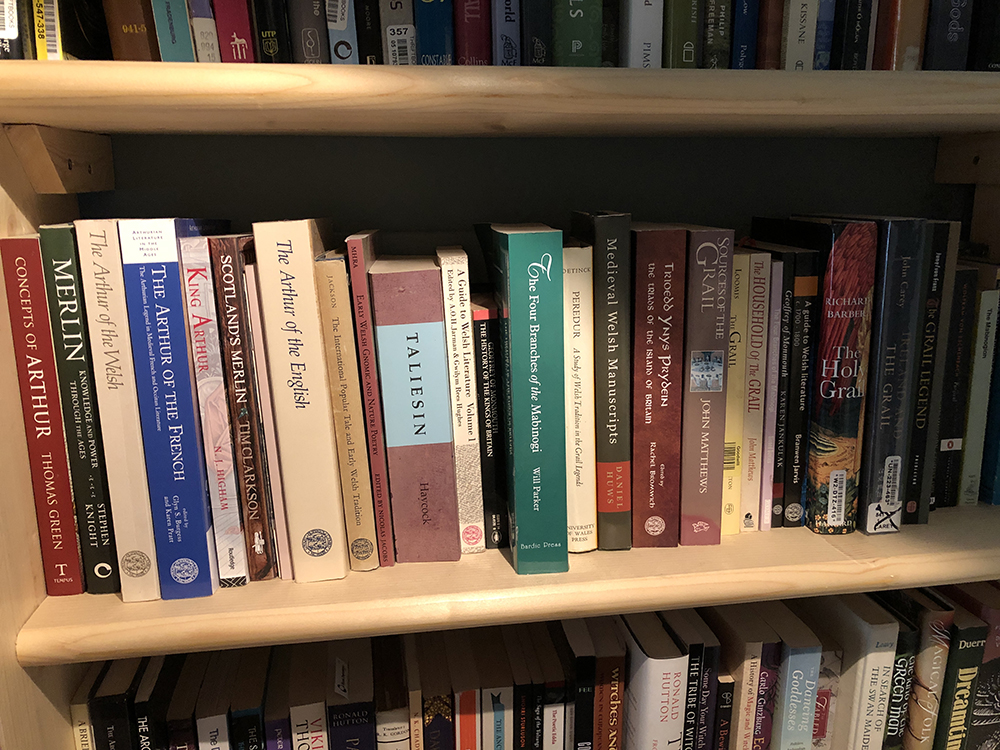
I’ve always been utterly captivated by the Arthurian legends, and the complex and beautiful mythology of the Grail. At the age of eleven I was making copious lists in our school library comparing the names of the Knights of the Round Table in Sir Thomas Mallory’s work to their ‘equivalents’ in The Mabinogion and the wider British, French and German Arthurian literature. Yes, I suppose I was a strange child! I didn’t ever complete the mapping exercise, but it’s an obsession that never left me, so when I did an MA in Celtic Studies at the University of Wales, I spent a lot of time researching some of the early Grail-related references in the oldest Irish and Welsh texts. One day, it’ll inspire another book – perhaps a set of stories. All of my writing – fiction and nonfiction – is in one way or another steeped in mythology.
A location that has inspired you
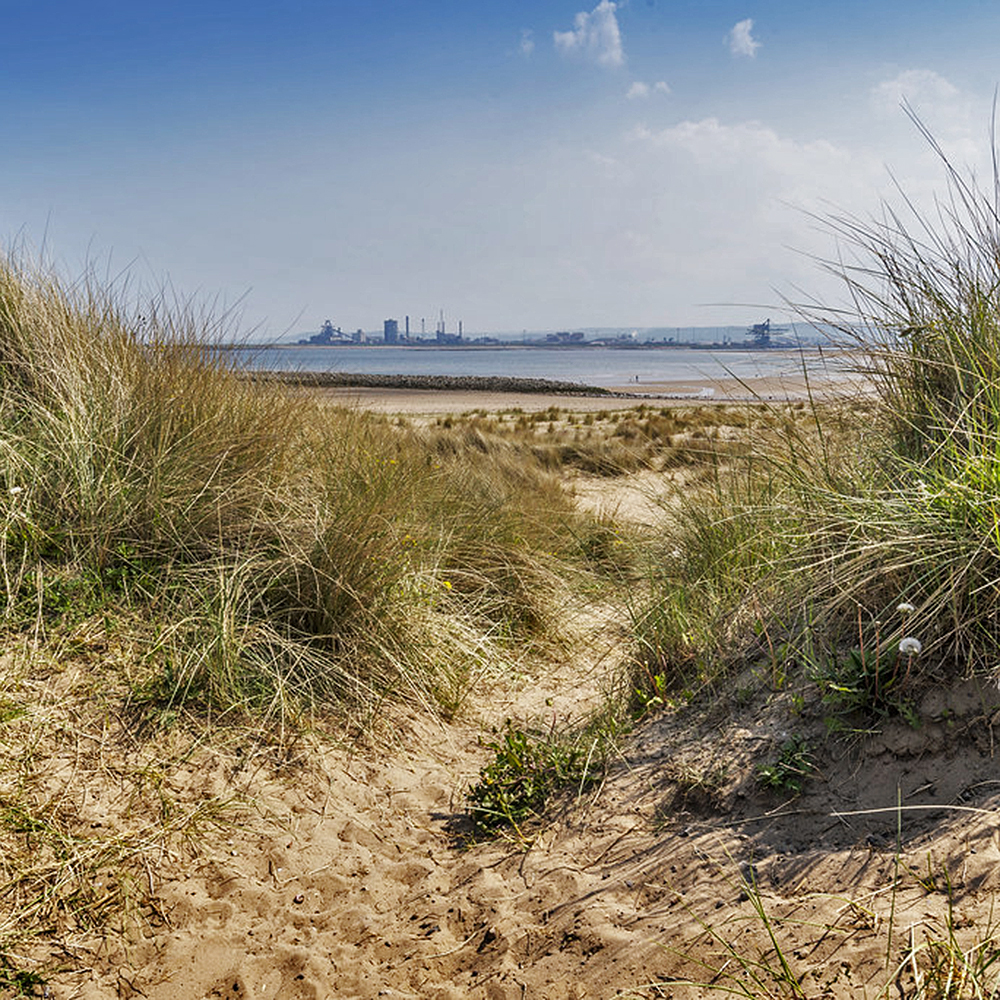
For the second half of my life I’ve gravitated to living in wild landscapes, and those are the places I’ve written about and which have mostly inspired my work up to now. But it was the landscape of my childhood that first taught me about the mythic imagination. I grew up on the fringes of a council estate near Seaton Carew in Hartlepool, a coastal town in the north-east of England; the landscape was a curious mix of salt marsh and sand dunes (now the Teesmouth Nature Reserve) and full-on heavy industrial nightmare. But I didn’t see it that way as a child; I saw instead that the salt marshes were inhabited by all kinds of strange wights; dragons lurked in the sand dunes; the pitchfork-shaped, steam-spewing steelworks structures across the River Tees were wielded by devils whose purpose I didn’t then fully comprehend. As I grow older, I’m beginning to appreciate the North all the more – to recognise all the ways in which it shaped me, as a person and as a writer. I suspect it’ll make its way into a future tale or two.
An object that has inspired you
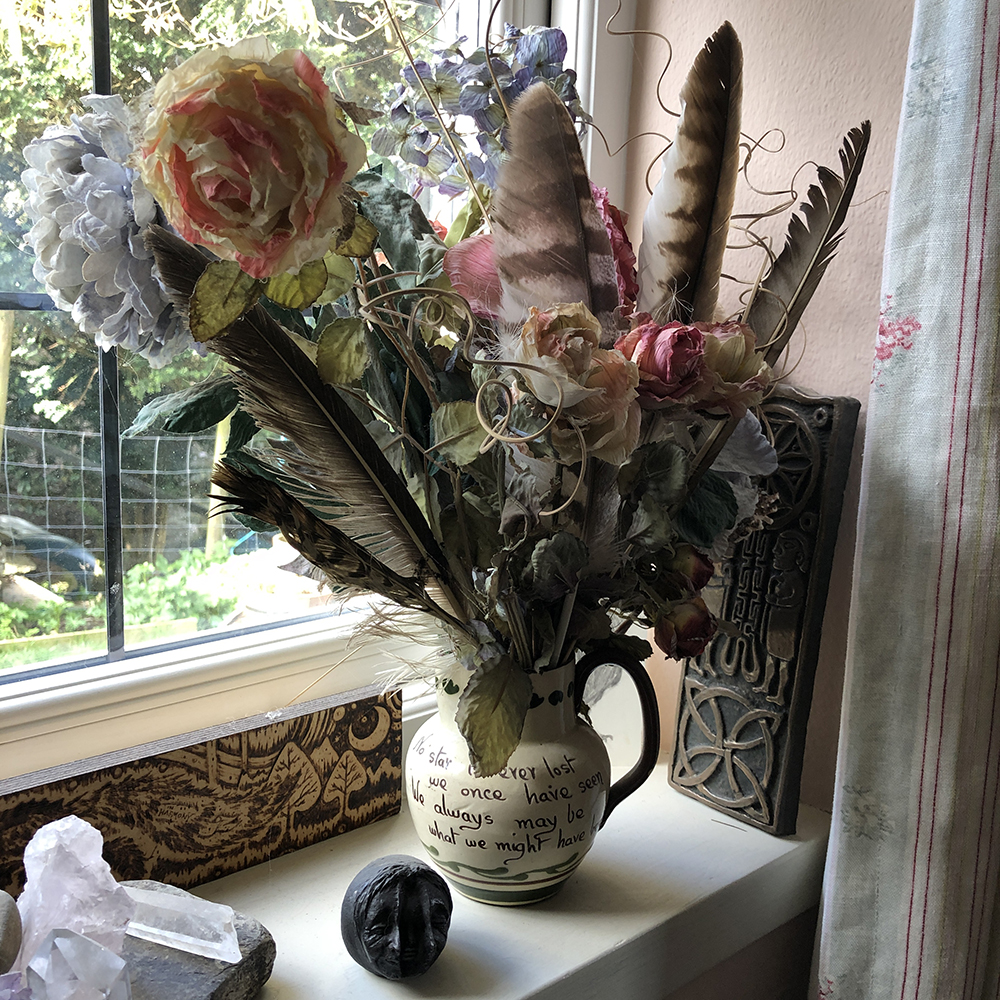
In If Women Rose Rooted I wrote about my early working years in a corporate ‘Wasteland’, and my struggle to escape and lead a life that I knew would be more meaningful. My mother lived in Wales, close to where I live now, and I would often escape there at weekends for a dose of mountain therapy. One time – I must’ve been 32 – my mother and I took refuge from the cold and wet in a café which also sold a random assortment of old books and antiques. An object there caught my eye: an old Devonware jug. The inscription on it read:
No star is ever lost
we once have seen
We always may be
what we might have been
(I later discovered that these are the first two lines from a poem by Adeleine Anne Proctor.) I glanced past the jug to my reflection in the window behind, and caught the dark circles under my eyes and the hollowness on my face. I bought the jug, clutching it to my heart like a talisman, like the talisman that it still is today. It inspired me shortly afterwards to pluck up the courage to leave my job and take my chances in a dilapidated old cottage in Ireland – an infinitely wilder and freer life. It still reminds me of everything that is possible in a world which so often seems only to beat us over the head with the impossible.
The photo that best sums up your author journey
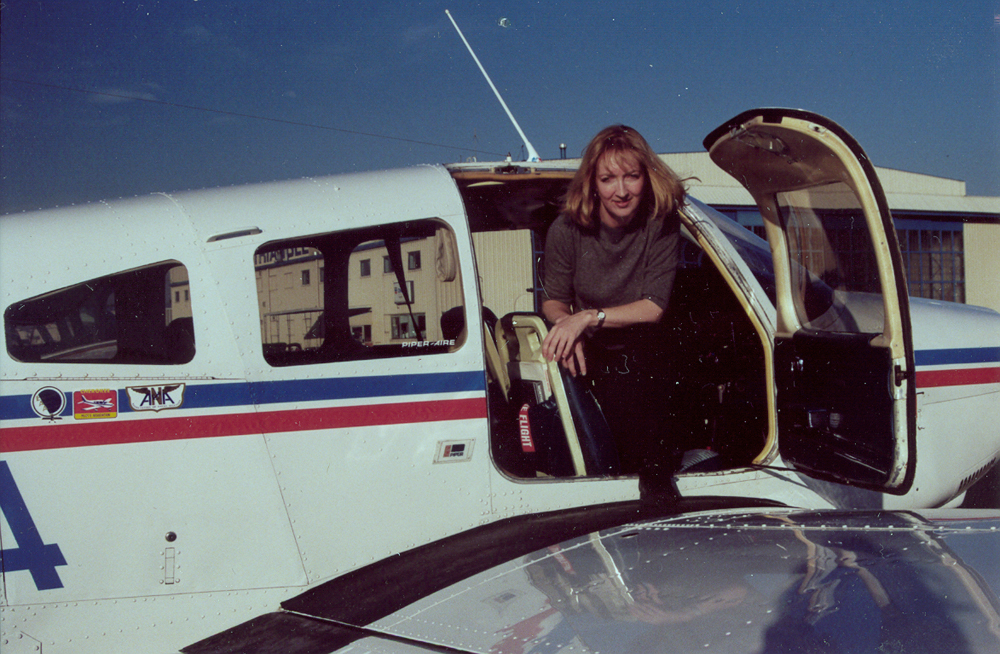
In 1999 I was 38 years old, living in America, working again in a corporate job, and on my second major midlife crisis. I needed to finally, finally break out of the corporate world that I’d reverted to after a messy and expensive divorce, but an impoverished and challenging childhood had made me always fearful and far too hung up on security. One day, shortly after JF Kennedy Jr had died piloting his small airplane, I took it into my head that I needed to learn to fly. It might sound crazy, but it made perfect sense to me at the time – because I was afraid of flying. And I had come to believe that if I didn’t find some way to break out of the anxiety and fear that seemed to be dominating my life, and stare death right in the face, I’d never really learn to fully live. Well, it worked. Several months later, I was handed the pink piece of paper which would enable me to apply for my private pilot’s license by a crusty old ex-US Marine, in the heart of the New Mexico desert. It had been a long and profoundly transformative journey, and by the end of it I figured that if I could do that, I could do anything. So I handed in my notice, bought a small rundown croft on the far north-west coast of Scotland, and reimagined my life. Shortly afterwards I fulfilled that childhood dream and wrote my first book – a novel, The Long Delirious Burning Blue, which incorporated some of that flying journey, as well as a healthy dose of folklore and selkie stories.
Your most beloved and well-read book
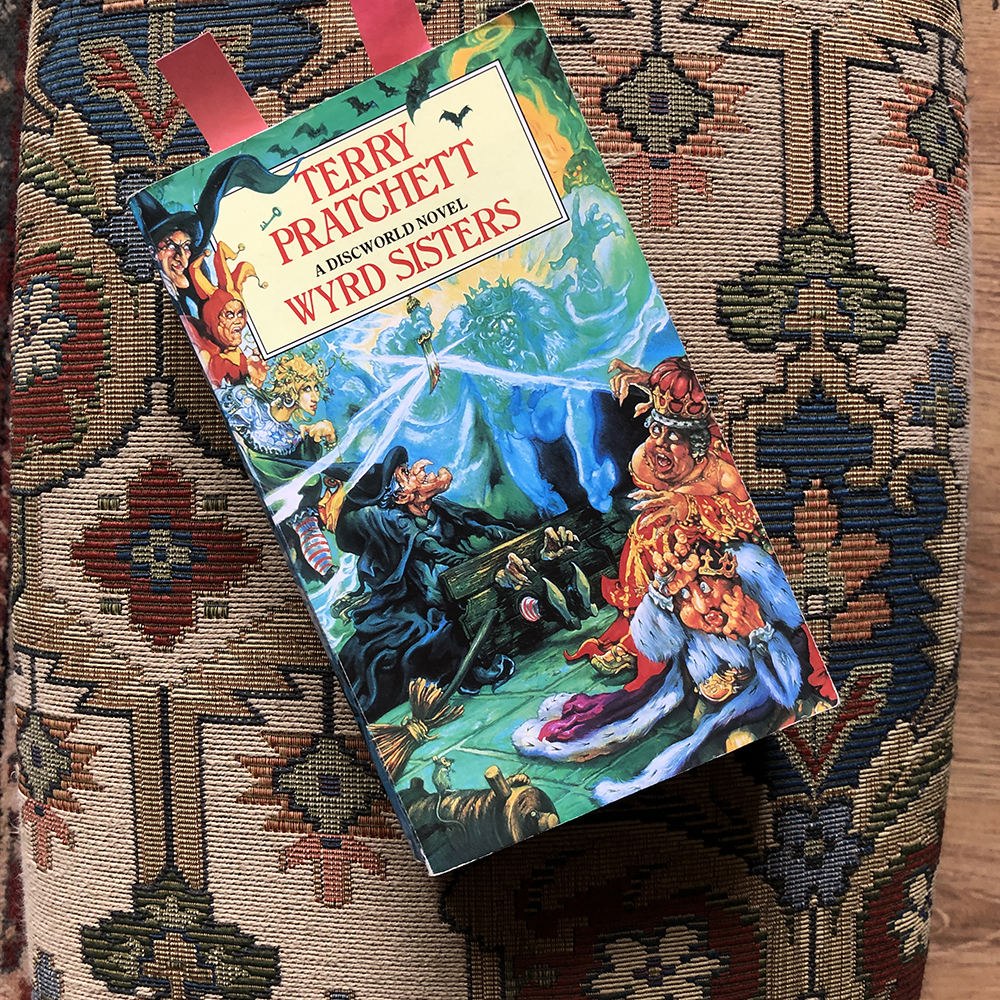
I have so many that have travelled with me around the world, from house to house. But if I were to pick one that I return to again and again during this stage in my life, it would be Terry Pratchett’s Wyrd Sisters, as well as his other books that feature that wonderful old witch, Granny Weatherwax. It always frustrates me when Pratchett is written off as ‘just’ a comic writer, although those attitudes seem to be shifting a little now; there’s a depth to his witch books which I adore. I particularly love that his witches are products of their places, and especially the geology on which they live – Granny Weatherwax could never be anything other than a granite witch. ‘Witches is a different thing altogether. [...] It's magic out of the ground, not out of the sky’, she says in Equal Rites. A few hours in her company settles me when nothing else will, and I for sure plan to model my old age on her. She is my favourite fictional character in the whole world.
***
If you enjoyed this, check out more titles by Sharon Blackie. You can also visit the Author Talk section of our blog to find more Author Q&As and 'Putting Authors in the Picture' features.
Recent Putting Authors in the Picture include:
#31 - Rachel Donohue
#30 - Caroline Bond
#29 - Keith Stuart
#28 - Graham Masterton
#27 - Stuart MacBride
#26 - Joanne Harris
#25 - Bridget Collins
#24 - Chris Hammer
#23 - Michael Robotham


.jpg)
Comments (0)
Leave A Reply
You must be logged in to post a comment.